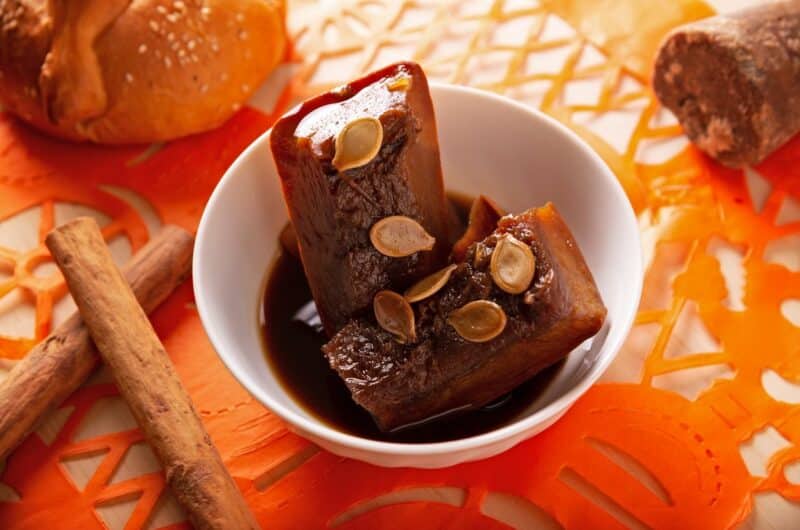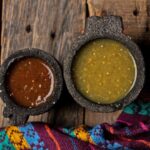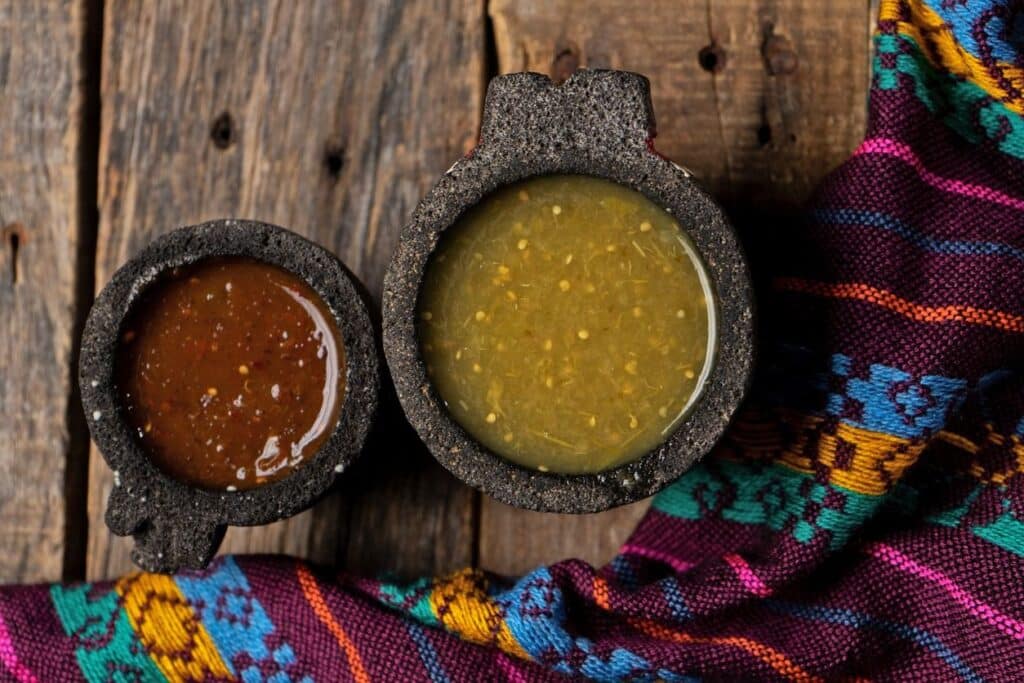Calabaza en Tacha or Pumpkin in Piloncillo for Day of the Dead
- October 2023
- By Vivi Abeja
- Recipe from Mexico
-
- (1)

Calabaza en tacha or pumpkin cooked in a piloncillo syrup is a traditional sweet dish that’s been associated with Day of the Dead since Mexico’s pre-Hispanic era.
It’s also one of the first recipes Vivi Abeja decided was a must-make as an ofrenda to celebrate her much-missed grandmother this first emotional Day of the Dead without her.
Vivi and Elisa Abeja, who died at age 92 earlier this year, were as close as a granddaughter and grandmother could be. Vivi links her decision to make cooking her life’s calling to childhood days spent watching her grandmother and aunts in their Little Village, Chicago kitchen. Vivi loves how her Abuelita’s greatest joy was cooking traditional dishes from her hometown in Michoacan for her large family of eight children and dozens of grandchildren. She specialized in simple Mexican dishes with just a few essential, perfect ingredients, a style of cooking her grandmother called comida de pobre — poor-people food.
To this day, “I truly love meals that require the simplest ingredients,” Vivi says. “It reminds me to stay grounded and appreciate the beauty in the simplest things. Expensive ingredients don’t make a great meal. It’s the effort put behind preparing every ingredient.”

Take this pumpkin recipe, a beautiful example of comida de pobre. Calabaza en tacha is a celebration of humble ingredients — pumpkin or calabaza, an ingredient native to Mesoamerica, going back thousands of years; sugar; water; cinnamon; cloves; and milk. This recipe could not be more simple or accessible.
The History of Calabaza en Tacha
Sweetened pumpkin is a dish that’s been made in Mexico for more than a thousand years. The Aztecs and Maya both used calabaza as a key ingredient in their meals, often adding the honey-like sap from the agave plant, from which we get another legendary gift from Mexico: tequila.
When the Spaniards arrived in Mexico in the 1500s, they shipped in sugar aboard their vessels. Their love of azucar soon influenced the preparation of this traditional dish. Their cooks learned to boil the pumpkin in water with piloncillo, unrefined sugar made by pouring boiled and evaporated sugar cane juice into square- or cone-shaped molds. The sugared pumpkins were cooked in huge pots called tachas, from which this dish gets its name: calabaza en tacha.
Vivi’s Inspiration to Make Calabaza This Day of the Dead
What inspired Vivi to make this pumpkin recipe as an ofrenda to her grandmother’s life and memory this Day of the Dead? ”My grandmother taught me how to make this recipe last year when she was showing me how to set up a día de los muertos altar,” says Vivi. ”It was the first time I did it with her — and ever.”
Is this pumpkin dessert a forever favorite of Vivi’s family? ”This recipe means a lot to our family and culture. It’s a statement dish during this time and something everyone in the family can enjoy because it’s such a sweet treat.”
How is her family recipe for calabaza en tacha different than other versions of this dish that has been made in Mexico for centuries?
”I like to make extra syrup on the side if there’s not enough syrup because it’s soooo good,” says Vivi. ”I also just started using oat milk or almond milk to substitute the extra sweetness from the syrup for a guilt-free treat.”
After Day of the Dead, November 1 to 2 this and every year, will she make this recipe again soon? ”I have only made this for Día de los Muertos and may make it again for the holidays. It’s definitely a fall-winter treat,” says Vivi.
Watch Vivi make this calabaza en taza as an ofrenda to her grandmother, along with sugar-cinnamon sprinkled buñuelos and champurrado, a hot atole drink made with chocolate and masa harina, as she builds her first altar for Day of the Dead here.
Curious to try more of Vivi’s and her Abuelita’s comida de pobre family recipes? Find more of their simply perfect Mexican dishes here.
Ready to Make Calabaza en Tacha for Your Family Feast?
MoreLike This










Got a question or suggestion?
Please rate this recipe and leave any tips, substitutions, or Qs you have!